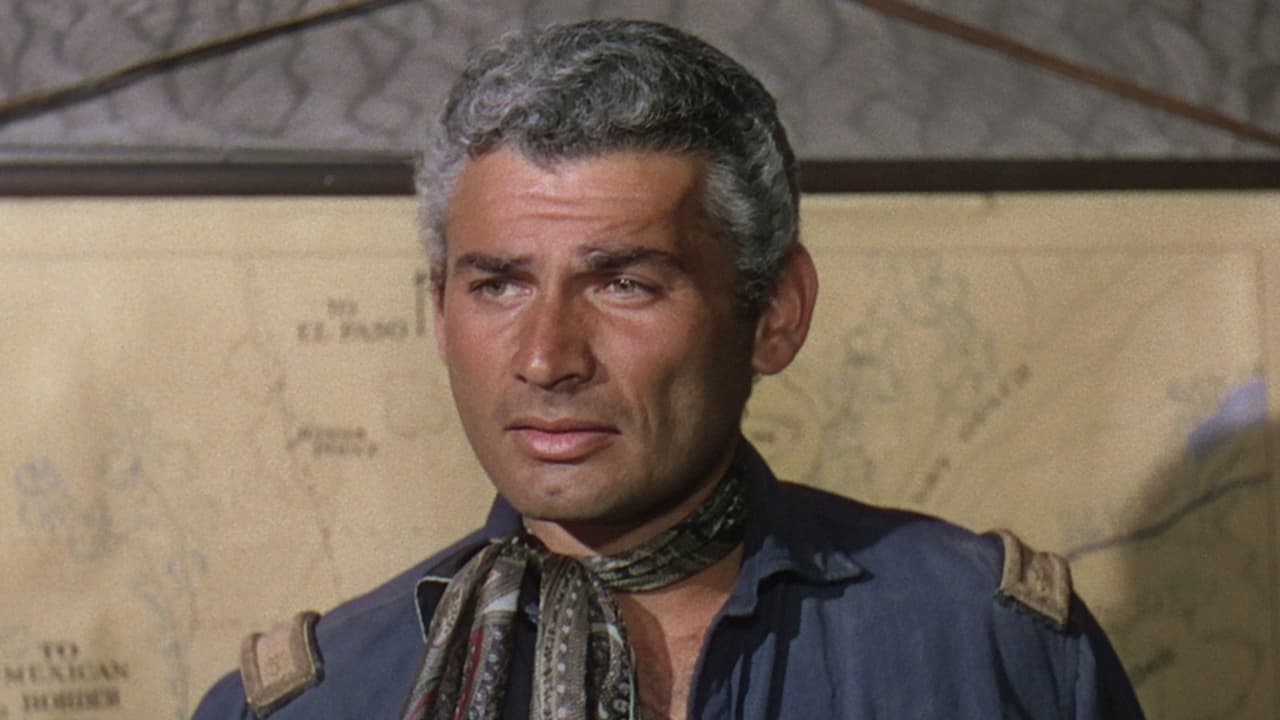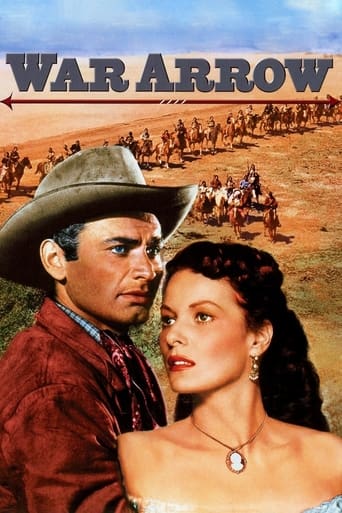

Jeff Chandler plays a major in the U.S. Calvary who wants to train the peaceful Seminoles to help the Army fight the savage, marauding Kiowas; Maureen O'Hara is a flirtatious widow whose captain-husband (found burned beyond recognition, yet still possessing his identification papers!) may be alive, having defected to fight alongside the Indians. Unconvincing Universal western with fine Technicolor photography but a flimsy, ridiculous script. No attempt is made to show why the Kiowas are so bloodthirsty; by the end, they are also portrayed as mercenary and stupid. Suzan Ball has the silliest role, that of a citified Seminole (and feminist!) whose education has apparently taught her the only way to get what she wants is by using her feminine wiles. There's the strong suggestion that Ball and Chandler have a one-night-stand, which is intriguing in and of itself, though screenwriter John Michael Hayes only utilizes the implication to drive cool-but-quickly-thawing O'Hara into Chandler's arms. A few interesting details, otherwise an assembly-line massacre for non-thinkers. *1/2 from ****
... View MoreAt one time the Seminoles were fierce fighters in their native habitat of Florida. However, after years of a notably successful war against the U.S. Army they finally agreed to peace and have been relocated from the swamps of Florida to the prairies out west. Without weapons they have been forced into a submissive posture against the warlike Kiowas. At the same time, the United States has a nearby fort which has also suffered harassment from the Kiowas as well. Determined to correct this situation, an Army major named "Howell Brady" (Jeff Chandler) is sent to the fort in an effort to rearm the Seminoles to augment the troops at the fort. When Major Brady arrives he meets an obviously frustrated Colonel Jackson Meade (John McIntre) who harbors resentment toward the major because of his own inadequate handling of the situation. Major Brady also meets an attractive widow named "Elaine Corwin" (Maureen O'Hara) who welcomes a new face in the middle of nowhere. At any rate, filmed in color this film was obviously geared for the drive-in movie crowd and probably filled that niche quite well. But it has nothing outstanding or noteworthy about it. The acting was adequate but nobody really stood out except maybe Maureen O'Hara. In short, this was an average Western. No more and no less.
... View MoreYou can always tell a bad Maureen O'Hara movie. If she is top billed, it's P U Stinky. Her main acting skills involve a mane of red hair and large bosoms.In this movie, O'Hara, once again, plays a fiery redhead who likes to tell the man she loves that she wants nothing to do with him. This was her sole role in movies until she got too old. Then she just got cranky with everybody.Jeff Chandler was second billed. The movie revolves around his character. He gets more screen time and all the action, but he is sadly lacking in the mammary department.They have plenty of Indians in this movie. Too many perhaps. It looks like they didn't all get outfitted in the same wardrobe department. Perhaps some of them simply wandered over from another movie.The plot is solid as a rock. There are a bunch of Indians who always attack in small groups. And there is another bunch that are peaceful. So the Army teaches the peaceful bunch how to fight in small groups like the other bunch. And then there is a big battle where everybody forgets their roles and just attacks everybody else en masse.And finally Maureen O'Hara gets to model a cool outfit.The end.This movie gets two stars: One for Ms. O'Hara's physical qualities, and one for her lack of screen time.I almost deducted a star for Dennis Weaver's portrayal of an Indian, but it was a relief to see the man walk around without a stick tied to his leg.
... View MoreJeff Chandler plays an army major who heads west in order to help an obstinate colonel quell a local Kiowa uprising. He has the idea to train some uprooted Seminoles to help the army defeat the Kiowa using some of the same hit-and-run tactics the Kiowa use to attack white settlers. The Kiowa are also helped by an army deserter who also happens to be Maureen O'Hara's ex. That complicates the love interest between Chandler and O'Hara.It's pretty standard stuff. The battle at the end in the fort didn't look too exciting although I've seen worse. Dennis Weaver as a Seminole indian looks unconvincing and John McIntire as the stubborn colonel can be a little too hard to believe at times. It's only when the Kiowa attack the fort and he gets shot that he comes around and believes Chandler's tactics were right, all along.The full-screen Universal DVD is pretty clean with little, if any film damage but the only extra is a trailer. No digital artifacts that I could see. In full Technicolor.They're are so many better westerns than this that Universal could have released on DVD. All those Audie Murphy oaters for example, so I hope they get around to doing it.At least at 78 minutes, this one had the benefit of not going on too long.Average.5 out of 10
... View More